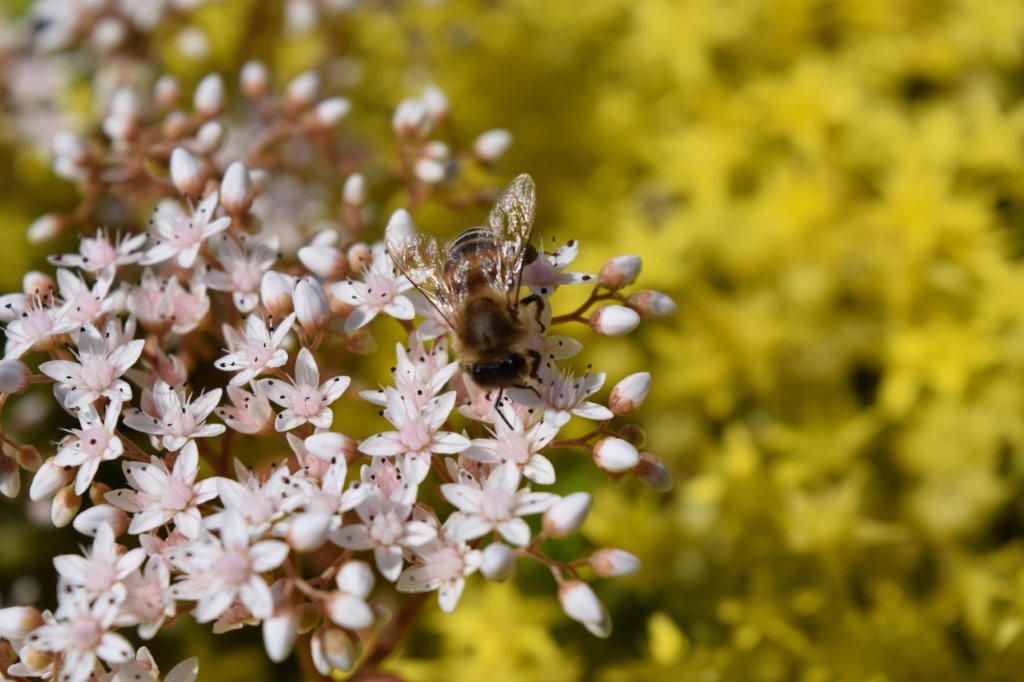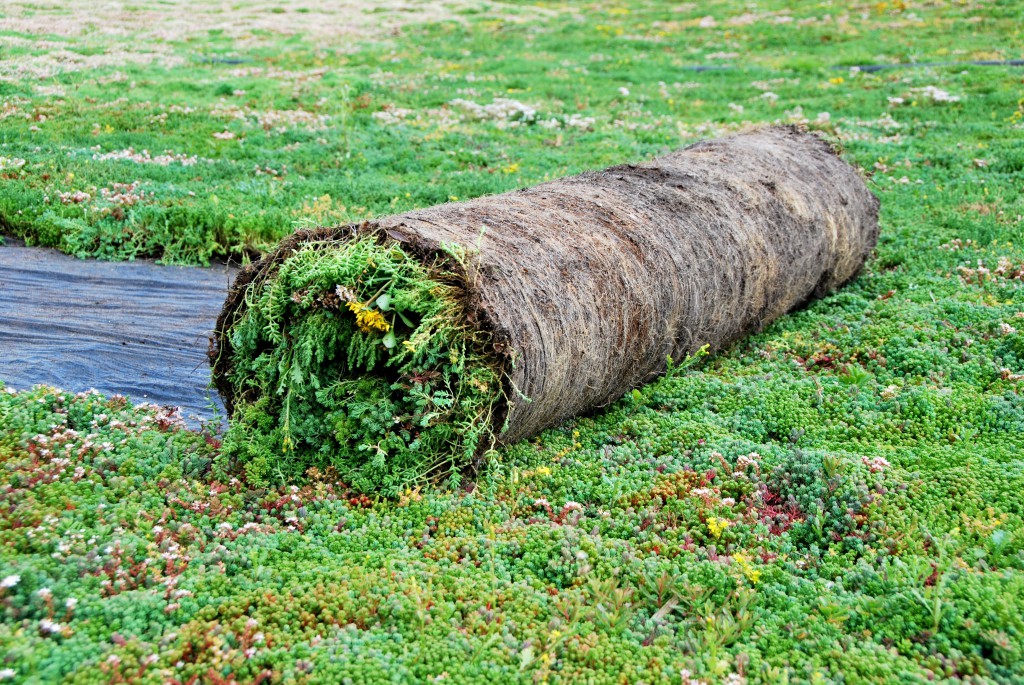Green Roofs & Food for Bees
By Cate Pedersen
Jake De Bruin, owner of BNC Ornamentals in the Lower Mainland, was certified as a landscaper in Holland. He learned about horticulture from a young age watching his family work in nurseries growing crops like tomatoes and peppers.
“It always stays in your blood,” De Bruin says. But it was not his plan to start his own nursery when he moved to Canada in 1995. “I worked for a nursery in the Fraser Valley and the owner asked me if I could grow some plants for him,” he explained.
De Bruin and his wife established BNC Ornamentals in 1996 and now ship over seventy varieties of perennials and ornamental grasses.

In 2014, it was through a mutual connection that De Bruin was approached by Sempergreen® USA in Virginia—North America’s largest producer of sedum coverings for green roof and landscape applications—to grow sedum, a succulent perennial with clusters of star-shaped flowers.
De Bruin partnered with Fritz Praat, another transplant from Holland who owns his own tulip nursery in Chilliwack. The newly formed company, named Eco Pro Plant Inc., produces the vegetative sedum mix blankets for Sempergreen.
Richard Hoek, General Manager of Sempergreen USA, explains, “We can supply larger jobs out of Virginia, but we missed out on smaller jobs on the west coast.” Eco Pro Plant Inc. is the only west coast supplier of sedum for Sempergreen USA.
“Our headquarters in the Netherlands ships over 20 million square feet each year—the majority of that goes into Germany. We have a facility in China as well and are actively looking to expand the Sempergreen network further worldwide,” Hoek explains. At any time of the year, Sempergreen USA has a minimum of 750,000 square feet available to ship in North America.
“We ship approximately 1.5 million square feet each year out of Virginia, and Jake and Fritz will eventually be supplying about 10-20 per cent of that for the Pacific Northwest and Vancouver. Probably 80 per cent of the products we sell go to roofing membrane companies for installation on green roof projects,” Hoek says and goes on to describe the growth he’s witnessed in green roof installations on the west coast and expects great things in those markets.
With De Bruin and Praat’s help, Sempergreen USA can now supply their clients in the west with product grown closer to the destination, circumventing a potential drop in quality and exorbitant costs from shipping coast to coast.

In the vegetation mats grown by Eco Pro Plant Inc., there are twelve to sixteen varieties of sedum, also called stonecrop. About five to six of these varieties perform very well in all of North America’s climates with the exception of the deeper south. The broad assortment and the assortment selection give Sempergreen the ability and flexibility to use the stock grown for the Pacific Northwest market in other areas of the U.S.A. and Canada as well.
Sempergreen’s website describes some of the benefits of sedum for green roofs: shallow roots necessary for limited substrate layers, low maintenance, low incidence of disease or insect infestation, highly adaptable, and survives in harsh climates.
“Sedum is a tough plant that grows to about four inches tall and needs hardly any water,” describes De Bruin. “It can handle extreme drought and extreme heat and cold well.”
What pleased him was the added bonus of sedum, and that is that it is an excellent food source for bees. “Sedum flowers early so if the bees are up early in the spring there is a little flowering, then it blooms for months. I was impressed to see 30 or 40 bees per square meter on my fields,” he says.
De Bruin spent some of his holiday time this past year researching bees and is excited about the prospect of helping supply more green roofs in urban areas and at the same time helping the bee population. “If there are more urban farms and green roofs, not only would they feed people, they would also feed the bee,” he notes.
Articles he read stated that honey from bees in the cities and on smaller plots of land might be of better quality and have less chemical pollutants than the honey produced by commercial growers.
He wonders if bee populations might thrive better in urban gardens, on green roofs, and on smaller farms where sprays are not used. De Bruin and Praat plan to place bee hives among the fields of sedum next year.
Green roofs are a healthier option for humans as well as bees and other insects. They are sustainable, retain moisture, and can prolong the life of roofs up to three times longer as the vegetation provides a protective, insulation blanket—plus they provide a pleasing green oasis in a concrete landscape.
“We have all that gravel and tar on rooftops and garages and we could be growing wild flowers or sedum,” observes De Bruin. “You can create a healthier city.”













